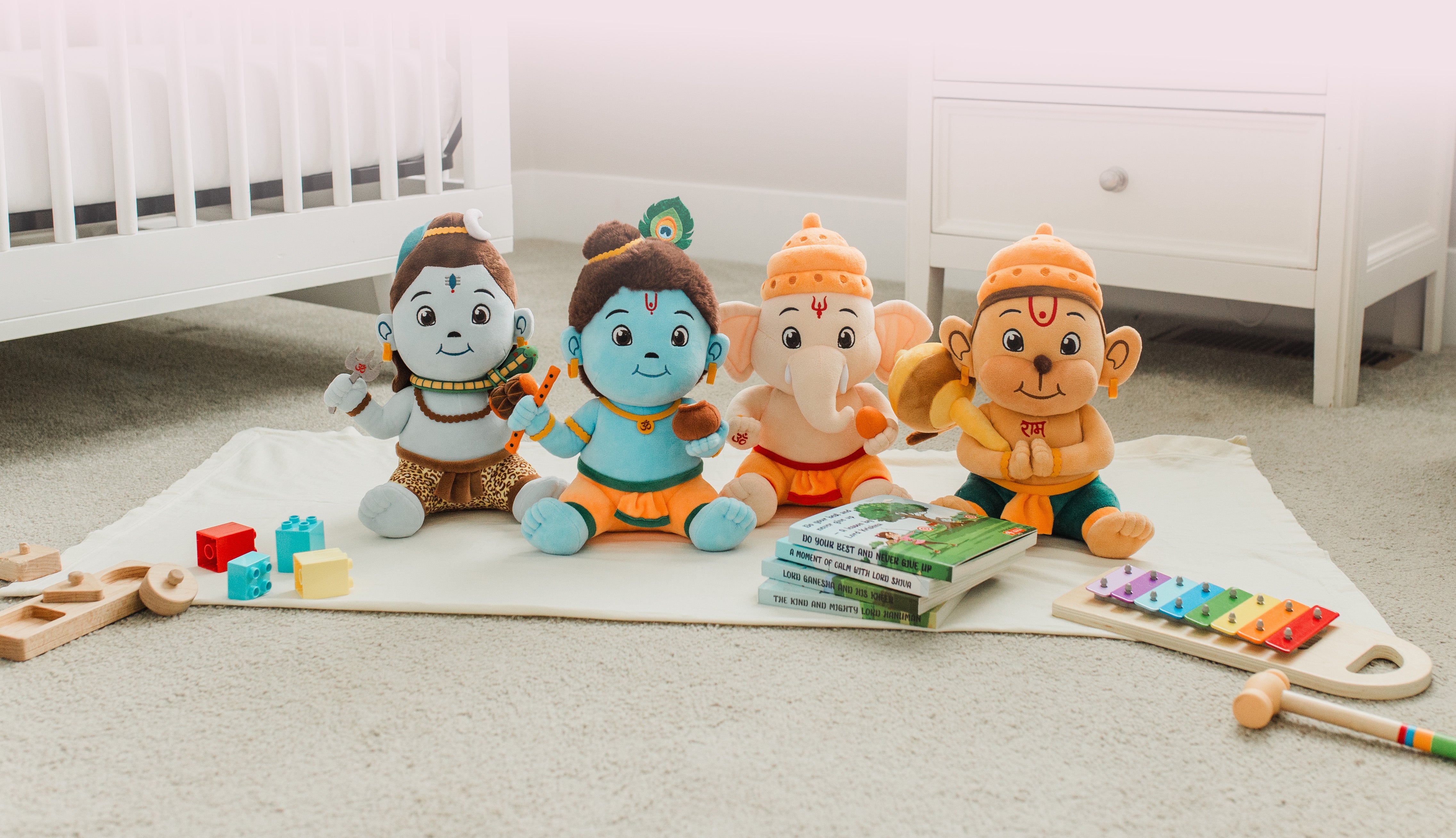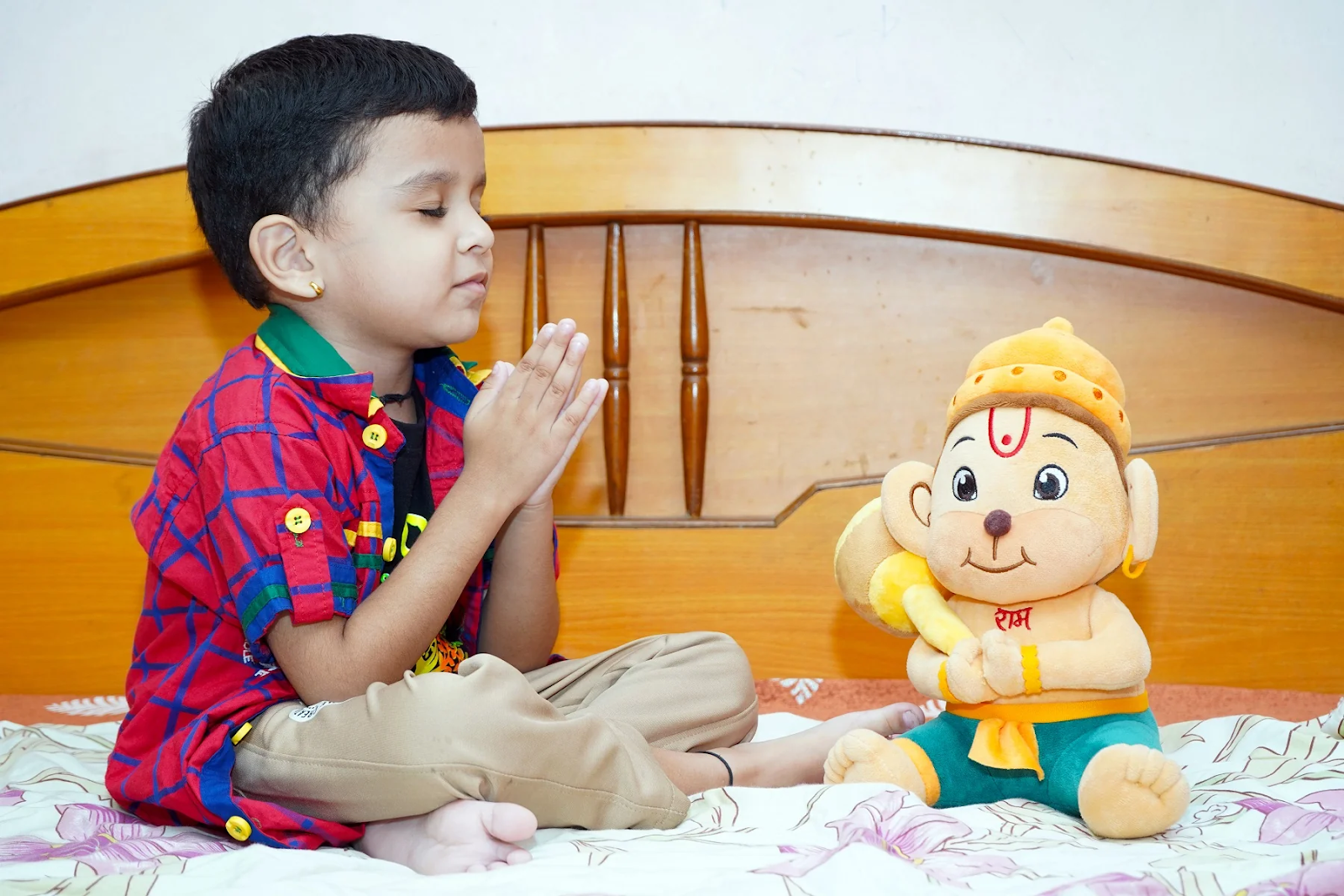The Role of Mantras in Early Childhood Development
Mantras have been a cherished part of cultural traditions around the world for centuries. Rooted in sound, rhythm, and repetition, these sacred phrases hold deep significance across spiritual, cognitive, and educational practices.
Beyond cultural traditions, mantras, also featured in our mantra toys collection, support early childhood development in meaningful ways. For parents and educators, introducing mantras during formative years encourages growth, learning, and well-being.
Let us explore how mantras, especially when introduced through playful experiences, can nurture language skills, cognitive abilities, cultural awareness, and emotional resilience in young children.
1. Supporting Cognitive Development with Sound and Rhythm
Mantras engage the young mind through rhythm and repeated patterns of sound. This gentle stimulation helps build connections in the brain that support memory, focus, and listening. These repeated auditory experiences create positive reinforcement for concentration and recall. Over time, the rhythmic exposure can encourage deeper engagement and mindful awareness in young learners.
Encouraging Cognitive Growth:
-
The steady rhythm of mantras promotes attention and helps children engage in mindful listening.
-
Repetition of sounds fosters memory skills and strengthens auditory recognition.
-
Exposure to rhythmic patterns supports healthy brain activity and focus.
Interactive play that includes mantra sounds can enrich a child's daily experience and contribute positively to their cognitive journey. These experiences encourage curiosity and engagement with learning activities. Regular interaction with mantra sounds can also inspire a lifelong appreciation for mindful listening and learning.
2. Encouraging Language Skills with Repetitive Sounds
Early language development flourishes with exposure to sounds and speech patterns. Mantras offer a unique way to introduce meaningful sounds that enhance language learning. The rhythmic and repetitive nature of mantras makes them easy for young children to absorb and imitate. This natural engagement with sound patterns supports the foundation of language expression and comprehension.
Building Language Confidence:
-
Repeating mantras introduces children to new sounds, enriching their vocabulary and sound recognition.
-
Reciting rhythmic phrases nurtures clear speech and pronunciation.
-
Regular exposure to mantras encourages expressive language use in natural settings.
Toys and educational tools that feature mantras support joyful learning while enhancing verbal abilities. Explore the thoughtful range of mantra-inspired play options at our mantra toys collection. They offer an opportunity for children to connect with sounds in a playful and meaningful way. Exploring language through mantra play helps children build confidence and joy in their communication.
3. Inspiring Cultural Awareness and Connection
Mantras connect children to cultural traditions through sound and language. These gentle introductions foster early understanding of diverse customs and traditions. Listening to mantras from various cultures encourages an appreciation for global values and ways of life.
Nurturing Cultural Understanding:
-
Mantras introduce children to sounds and stories from various cultural backgrounds.
-
Learning traditional phrases fosters respect for cultural heritage.
-
Exploring mantras can inspire curiosity about the world around them.
Using toys and storytelling inspired by mantras allows children to experience cultural richness in a way that is both engaging and meaningful.
4. Supporting Emotional Growth with Calming Sounds
Mantras offer a serene presence in a child’s environment, promoting a sense of peace and calm. The repetitive and gentle nature of mantra sounds can provide children with moments of comfort and emotional security. These sounds often create a soothing rhythm that fosters emotional resilience.
Cultivating Inner Calm:
-
Soft, repetitive mantra sounds promote relaxation and comfort.
-
Chanting simple mantras can introduce mindfulness in daily routines.
-
Encouraging positive affirmations supports self-confidence and a sense of peace.
Through toys and activities that incorporate calming sounds, children can experience soothing moments that support emotional health.
5. Enhancing Listening and Auditory Awareness
Mantras serve as valuable tools for nurturing listening skills and auditory awareness. Their rhythmic and patterned sounds invite children to focus and recognize different tones and melodies. This active listening experience supports overall auditory development in a playful and engaging way.
Strengthening Listening Skills:
-
Repetition of sounds helps children become attuned to listening and recognizing auditory patterns.
-
Exposure to mantra sounds builds phonemic awareness and sound discrimination.
-
Engaging with sound-focused activities enhances attentive listening and comprehension.
Mantra-inspired play supports natural auditory learning in ways that feel playful and nurturing.
Conclusion
Mantras hold a meaningful place in early childhood development. When woven into play, learning, and daily routines, they offer gentle support for cognitive abilities, language growth, cultural connection, emotional well-being, and listening skills.
At Cuddly Gurus, we embrace the power of mindful play. Our mantra-inspired toys are thoughtfully crafted to introduce children to the joy of sound, culture, and calmness—fostering growth with each joyful interaction.
Want to learn more about our products? Reach out to Cuddly Gurus or visit us online to explore the full collection.
FAQs:
1. How do mantras support early childhood development?
Mantras promote language skills, cognitive development, cultural awareness, emotional well-being, and auditory learning through rhythm, sound, and repetition.
2. Can I introduce mantras to my child during playtime?
Yes. Using toys or daily routines that include gentle mantra sounds makes learning playful, natural, and enjoyable for young children.
3. What kind of toys incorporate mantras?
Soft toys, sound books, and interactive learning tools with mantra recordings create fun and educational experiences for children.
4. How do mantras help with emotional balance?
Mantras bring a sense of calm and comfort, promoting mindfulness and supporting a positive emotional environment for children.
5. Are mantra-inspired toys suitable for all ages?
Mantra-inspired toys can be gently introduced to children from infancy, offering benefits that grow with them through early childhood.

